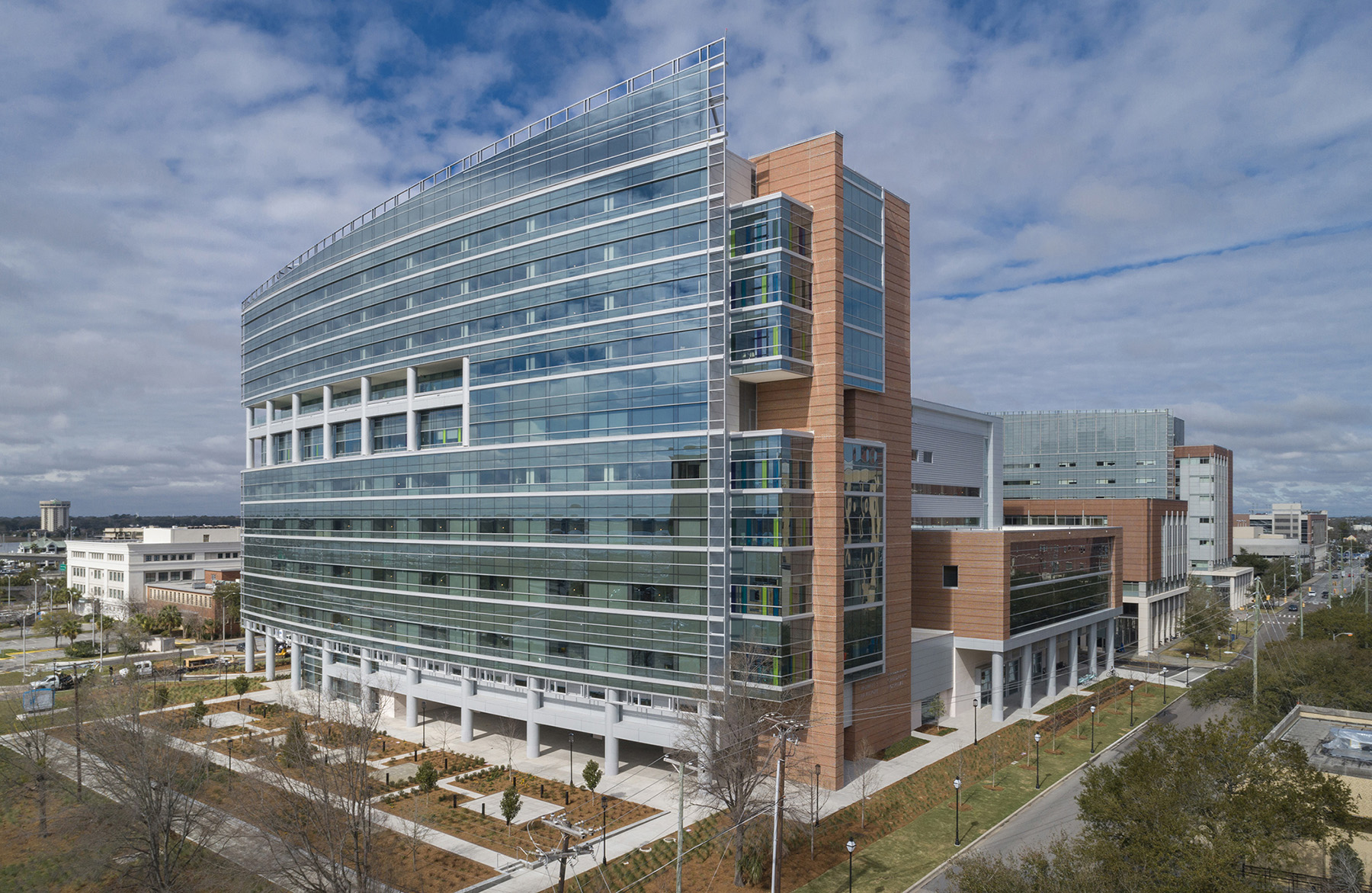
By Brent Bandy, P.E., S.E., LEED AP, M.ASCE
The Medical University of South Carolina Shawn Jenkins Children’s Hospital and Pearl Tourville Women’s Pavilion, in Charleston, showcase innovative structural elements, features designed to withstand environmental hazards, and spaces that will accommodate changes in function.
The Medical University of South Carolina, also known as MUSC, in Charleston, set out to design a state-of-the-art medical center that would transform how health care is delivered to women and children by seamlessly integrating children’s care with obstetrical services. The resulting Shawn Jenkins Children’s Hospital and Pearl Tourville Women’s Pavilion are the perfect examples of that desired integration.
The 625,000 sq ft facility comprises an 11-story tower and a contiguous seven-story diagnostic and treatment building. Modifications to the existing central energy plant were also made as part of the overall project. The new complex boasts the largest neonatal intensive care unit in the state, a labor and delivery unit with mother/baby postpartum rooms, an advanced fetal care center, and entire floors dedicated to specific health conditions such as cancer and cardiac ailments. The facility also houses 250 licensed beds, surgical operating rooms, and a variety of specialty medical equipment.
Furthermore, in the desire to be an inclusive hospital, there is a sensory room specifically for the needs of those on the autism spectrum. In fact, the space was designed by Perkins&Will — which served as lead architect for the project — with feedback from parents of children with autism spectrum disorder, the hospital CEO, clinical leadership, staff, patients, and community volunteers, according to the firm’s website.
Other features of the new medical center include a rooftop helipad that supports the U.S. Coast Guard’s 22,000 lb Jayhawk helicopter that is used for medical emergencies, a dedicated “stork” elevator that transports mothers from the hospital’s entrance directly to the fourth-floor maternity pavilion, and a rooftop garden space for children and their families.
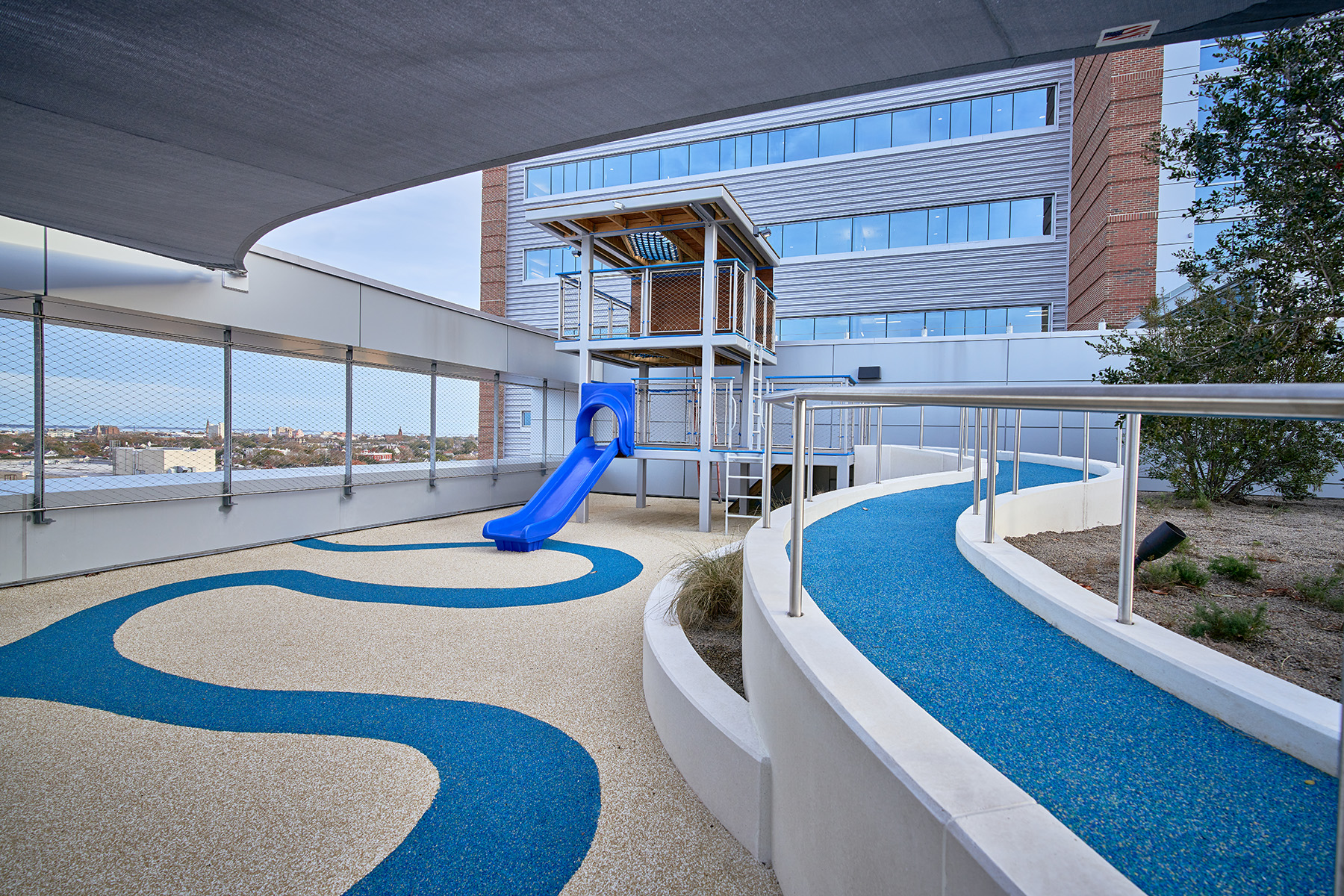
All this is supported by a customized structural system designed to adapt to changes in the delivery of health care while providing safety and resiliency in the face of hurricanes, earthquakes, and storm surge threats for the next 75 years.
MUSC has been serving the community of Charleston since opening the doors of its first facility in 1886. Since then, it has grown into one of the most valued health care assets for patients in the Southeast. More than $145 million of the $389 million project cost of the new space was paid for by personal contributions from over 7,800 individuals — a powerful testimony to MUSC’s importance to the community.
Functional flexibility
Creating a modern hospital that has the latest medical equipment and superior health care delivery — and that is also adaptable for future uses — is a complicated undertaking for structural engineers. Adding the challenge of simultaneously accommodating technically complex loads for hurricanes and earthquakes increases the complexity by another order of magnitude.
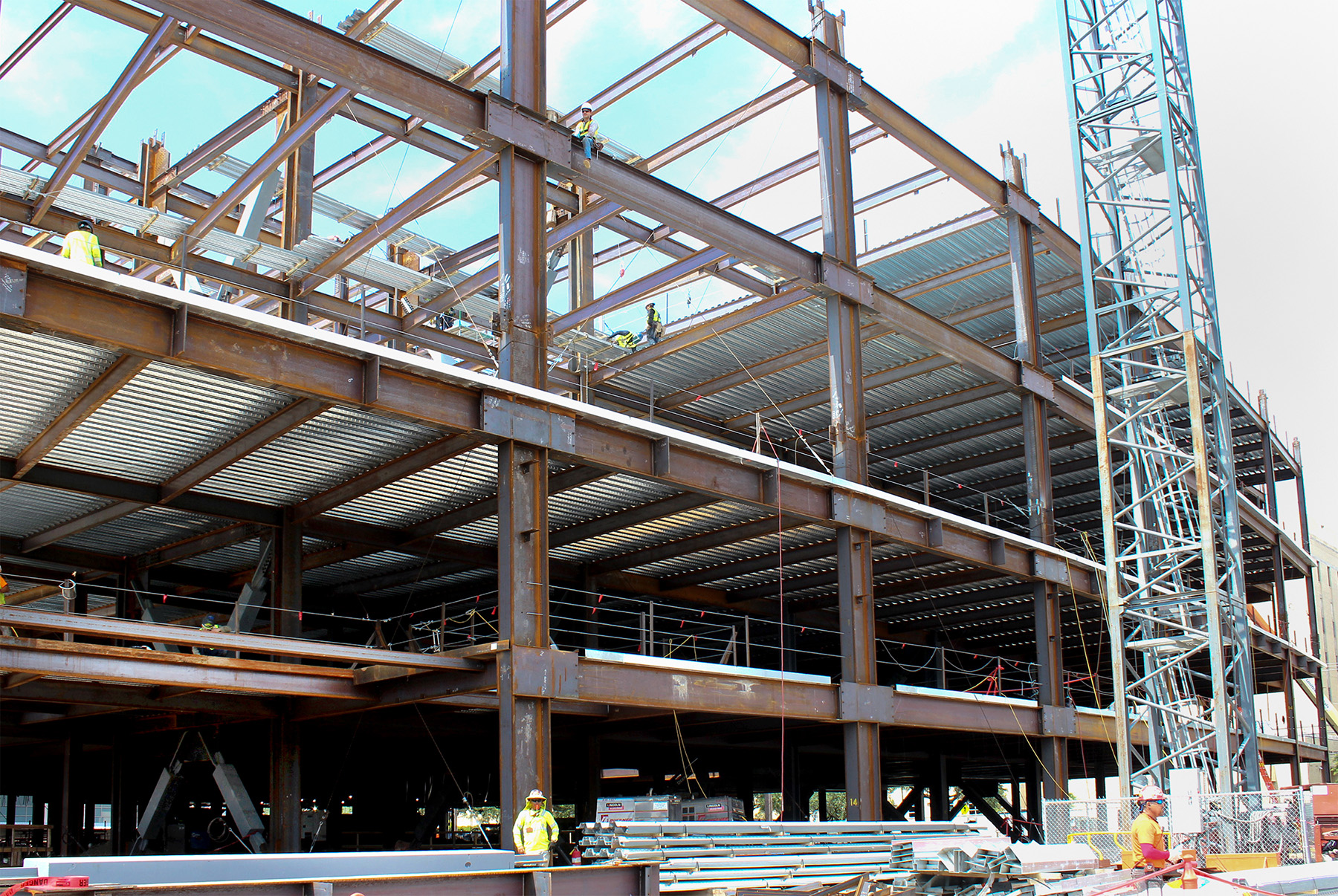
In addition to lead architect Perkins&Will, McMillan Pazdan Smith served as the associate architect. Because of the tight urban site, building height limit, and the need to fit the program (the types of services and treatment spaces, number of operating rooms, number of patient rooms, etc.) into the building, the team designed around 30 ft by 30 ft bays, which is smaller than is used in many of today’s new health care facilities. Choosing this size made it even more important for the team to keep the structural obstructions to a minimum and be selective as to where those obstructions were located.
The layout of the lateral force-resisting system early in the design phase was one of the first major roadblocks addressed by Walter P Moore, which was the lead structural engineer for the project. Given the constraints of geometry and the code limitations on seismic force-resisting systems for Seismic Design Category D, found in ASCE’s Minimum Design Loads for Buildings and Other Structures, the team maximized functional flexibility by employing a combination of moment and braced frames.
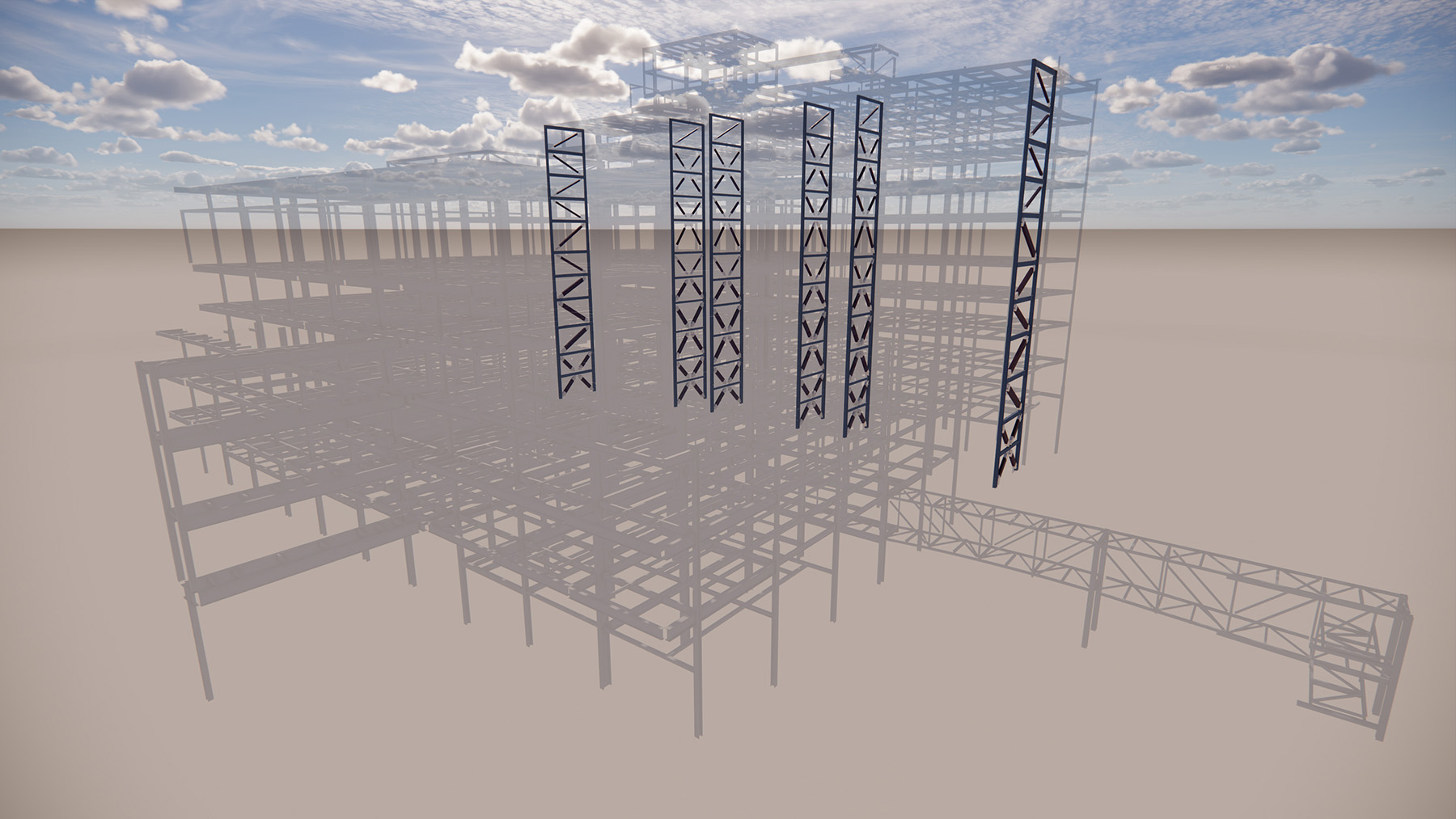
Due to the height of the tower — just over 200 ft — the team considered using braced frames in both directions. In the long direction, however, braced frames in the core would have resulted in a significant reduction in the efficiency of the space, and along the exterior walls the frames would have blocked the dramatic views of the Charleston Harbor. Instead, the team used MiTek’s SidePlate special moment frames in the long direction.
In the short direction, moment frames were not feasible due to the building’s geometry, so buckling restrained braced frames were used. The BRBs were located to maximize structural efficiency and allow more flexibility in the core space planning. Although SidePlate special moment frames and BRBs are commonly used systems, this creative application is their first combined use east of Salt Lake City.
Another problem in the design of the floor framing was determining the appropriate floor loading and vibration criteria. The owner wanted a minimum uniform design live load of 100 psf. Even though that is greater than the code minimum, this loading allows for more flexibility in how the space will be used in the future.
The process of designing floor framing for major medical equipment was much more detailed. Discussions about medical machinery with a variety of equipment stakeholders were held at the beginning of the design phase and continued well into the construction phase. During design, the architect and owner identified zones for medical equipment such as for MRIs and CT scans. The team reviewed design criteria from different equipment vendors and designed the floor framing for worst-case equipment weights and vibration criteria.
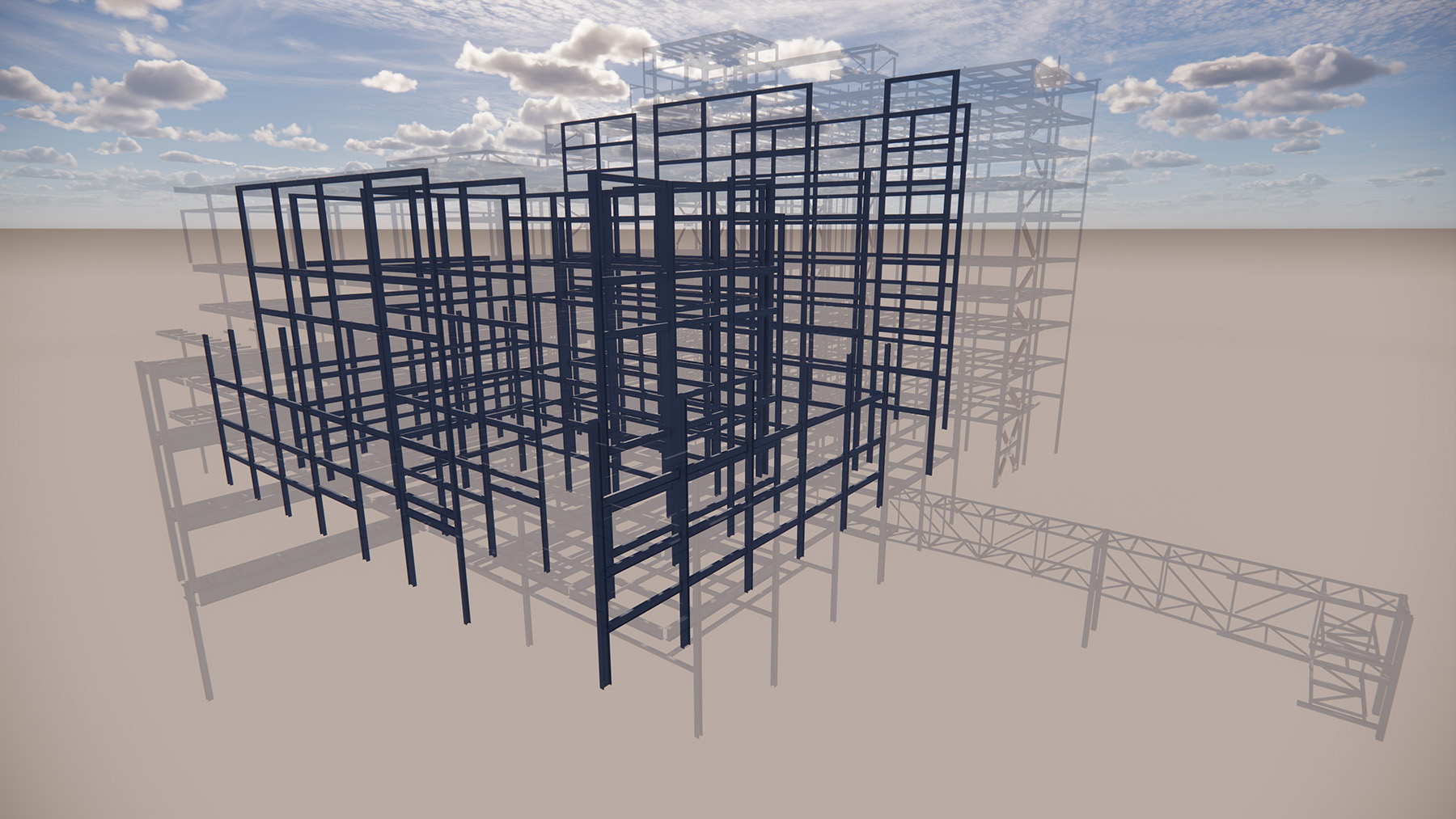
The remaining issue was addressing the vendor-specific large base reactions and overturning forces. In a few instances, the team waited until final equipment selection was complete before locally adding steel framing to reinforce the deck because the forces and dimensions of the equipment were unique to the vendor.
Resilient structure
Part of MUSC’s social mission is for the new facility to be operational at all times. Natural disasters such as hurricanes, earthquakes, and floods are real risks for the community, especially on the Charleston peninsula. The structural design incorporates each of these risks, as specified by building code, resulting in a structure that will withstand these extreme events.
Construction in Charleston demands careful engineering, and MUSC’s newest facility presented even more engineering obstacles than usual, starting with the twin risk of either a substantial earthquake or a powerful hurricane. South Carolina experiences up to 20 earthquakes a year, 70% of which are in the Charleston area. As a result, the city’s seismic risk is categorized surprisingly high in the International Building Code, similar to seismic hot spots such as Los Angeles and San Francisco.
The state is also a frequent target of tropical storms, with 249 storms recorded since 1851, which is far more than other well-known hurricane hot spots, such as Florida and Louisiana. To deal with this, Charleston building codes require a design wind speed of 157 mph, which is one of the highest in the country.
Once the layout of the lateral force-resisting system was in place, the engineers performed a full building analysis, applying load combinations representing seismic, wind, and gravity forces. For seismic forces, the team performed a modal response analysis to optimize the structure’s response during seismic events. Compared with the wind load check, the analysis showed that the greatest lateral forces for the tower would come from hurricane-force winds against the broad side of the building. BRB member sizes would, therefore, be controlled by the need to limit the drift of the building during a wind event.
The resulting large BRB member sizes presented the next challenge: developing a design resilient to earthquakes. The BRBs were used to provide ductility during a seismic event, allowing the beams and columns of the structure to remain intact. Because the BRBs were upsized due to the wind drift limits, the frame beams, columns, and connections were also upsized to maintain the BRB design as the limiting factor in the overall design. This resulted in the surrounding members being larger than would have been required to resist only the wind loads or only the seismic loads.
Next, the team designed the foundations for the wind and seismic strength forces as allowed by code, and not for the BRB capacity. Following that, the team designed the anchor rods for the capacity of the foundations, and the rods were detailed to allow ductile energy dissipation that would minimize their sizes and avoid upsizing the foundations.
Foundational systems
In addition to these environmental threats, the soils in this area of the peninsula are riddled with layers of pluff mud and loose sand. These layers are highly compressible and can liquefy during an earthquake, leaving little strength to support structures at the surface. Because of these poor soils, the project is classified with a Seismic Site Class F and a Seismic Design Category D, resulting in many restrictive code requirements.
ADC Engineering, a structural engineering firm, performed the complex design and detailing of the foundations, slab-on-grade, and floodproofing. ADC used driven piles to transfer column loads to the stiff sediment layer known as Cooper Marl, which is 60 ft or more below the surface. Different types of piles were considered, but ADC chose 12 in. and 14 in. square prestressed-concrete piles because of their overall economy and speed of installation. For the zone closest to the adjacent occupied hospital, micropiles were used to reduce noise and vibration.
The deep foundation system also supported the slab-on-grade. The soils in this area tend to consolidate over time under their own weight. The slab-on-grade was cast on top of compacted soil, but it was created and detailed as an elevated two-way slab to span between pile caps. Utilities were anchored to the underside of the slab to prevent them from moving with the soil as it settles.
Finally, because the MUSC site is just 8.5 ft above sea level, the design team also had to consider storm surge up to 6.5 ft above the ground floor. ADC developed the floodproofing plan in accordance with ASCE 24-14, Flood Resistant Design and Construction. The interior slab-on-grade was designed for the buoyancy forces of the rising groundwater below the slab, and the exterior slab-on-grade was allowed to flood. The team devised a removable floodproof panel system around the perimeter of the occupied ground floor, which serves as the main entrance lobby for the facility.
Achieving goals
The project received funding from a combination of private philanthropy, state support, and Department of Housing and Urban Development financing. Key project goals included delivering ultramodern health care as well as landmark architectural design, each of which had its own cost. One unique cost factor for this project came from the structural systems required to address hurricanes, earthquakes, and floods as well as inferior soil conditions.
The cost of these systems threatened the ability of the owner to fully achieve its goals unless savings could be realized by the team in other aspects of the project. One way this was accomplished was by minimizing the use of miscellaneous steel by employing a deeply collaborative, cross-functional process.
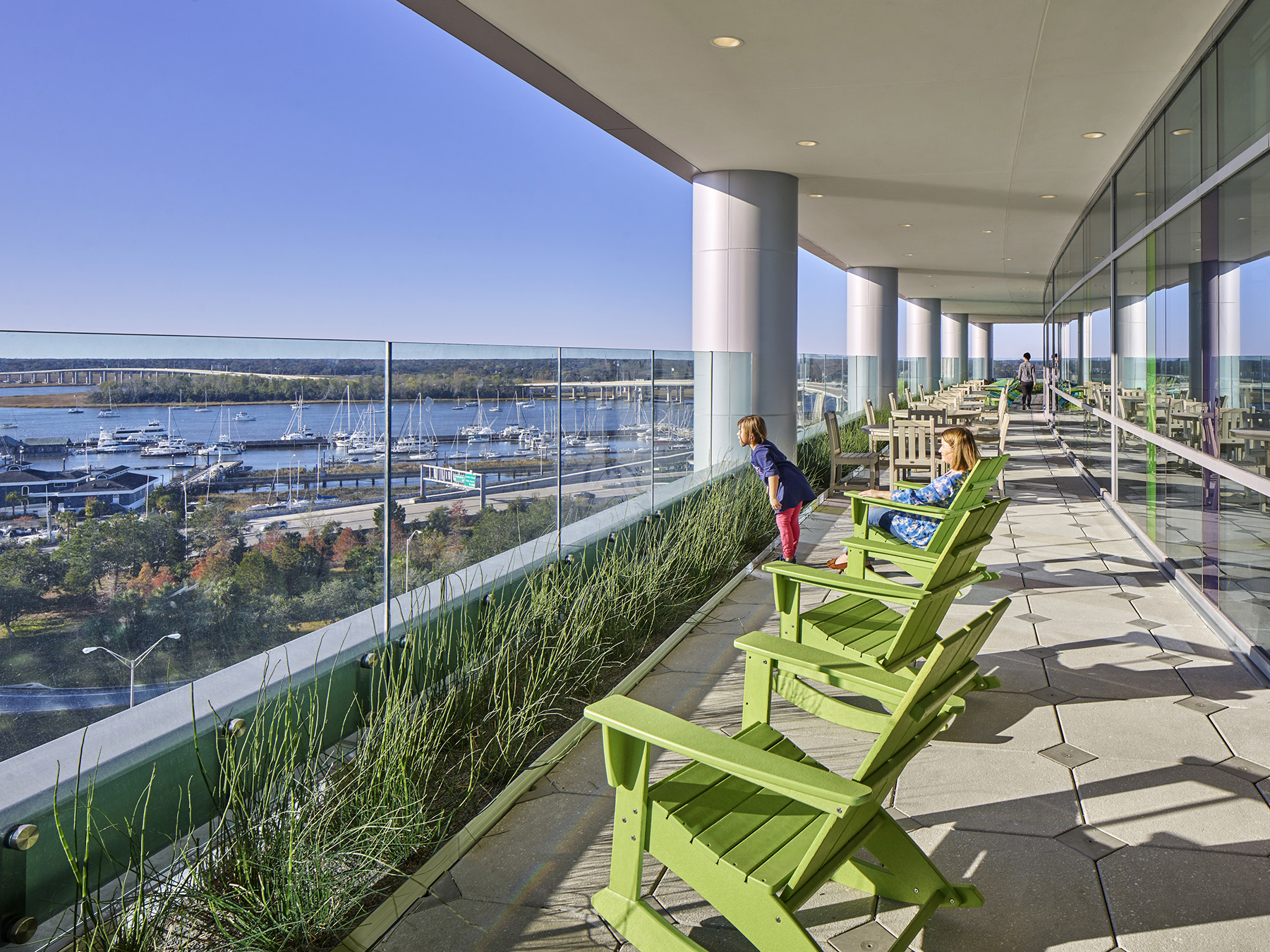
The team implemented a target-value design strategy early in the design phase. Walter P Moore was involved in the structural and exterior envelope cost cluster groups and brought these teams together in the firm’s Atlanta office to brainstorm ways to create cost and schedule efficiencies with other (nonstructural) building systems.
This cross-cluster group consisted of the owner, design team, construction manager, steel fabricator, and major exterior envelope subcontractors such as those for the curtain wall, metal panel, and drywall. The creative work of this group reduced miscellaneous steel tonnage and complexity, resulting in a net savings of more than $500,000, which was then added to another program that more directly addressed the clinical goals of the facility.
The roof garden
Patients, visitors, and staff benefit from the hospital’s many special features. The overwhelming favorites are the Jerry and Anita Zucker Family Atrium and the Boeing Outdoor Play Space, both funded by special donations. The atrium is a 3,200 sq ft indoor play area for children and their families. The outdoor space is a 10,000 sq ft playground and respite area with a mix of typical playground equipment and other whimsical structures for children. It also has a separate quiet area for families and seating overlooking the harbor.
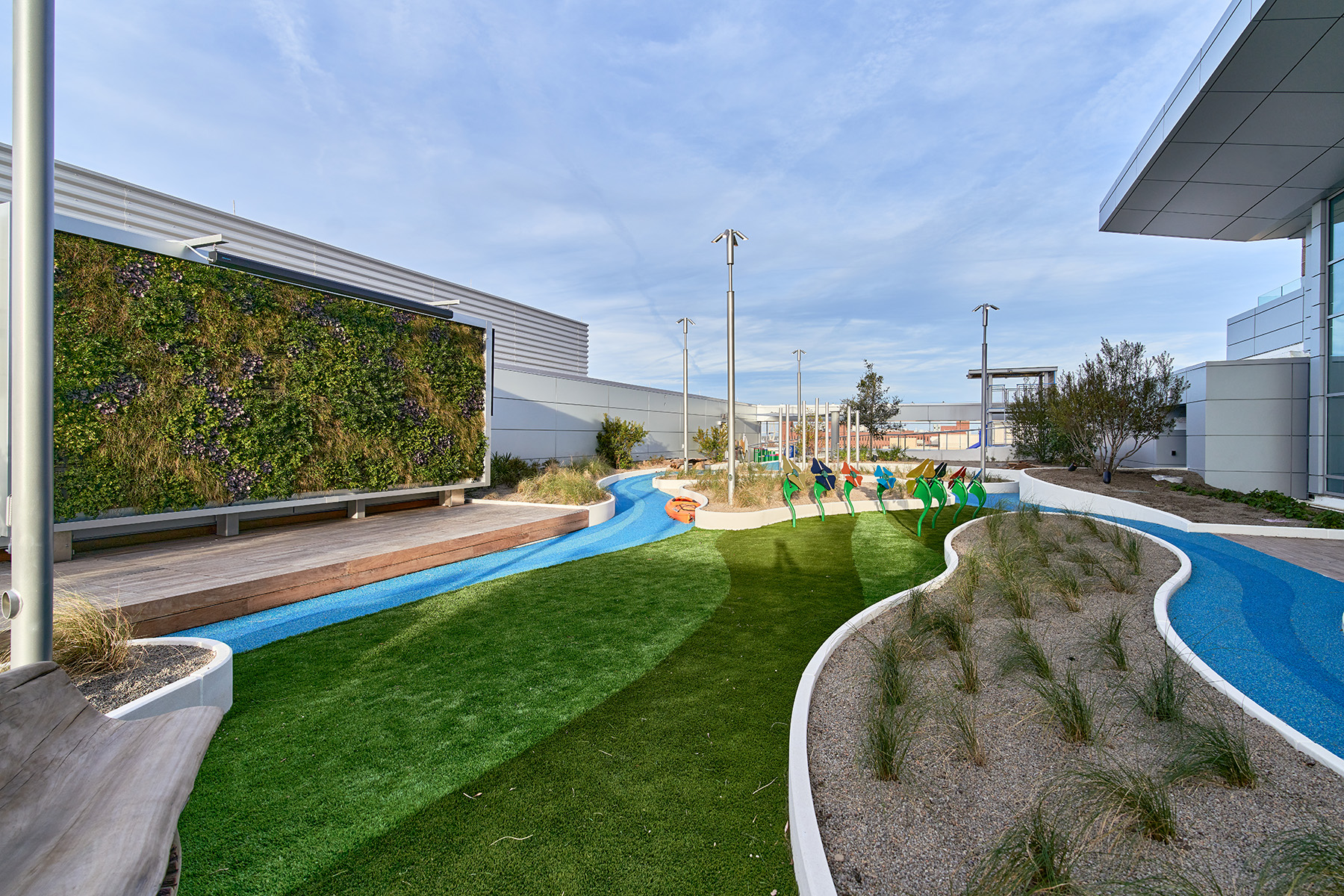
In addition to the planning for these indoor and outdoor spaces, in the early design phase the owner and architect also envisioned adding a garden on the seventh-floor low roof. Without knowing exactly how that might take shape once donors had been confirmed and a design concept accepted by stakeholders, the engineers designed the low roof for a superimposed 100 psf dead load and a 150 psf live load and dropped the framing by 12 in. to accommodate waterproofing, drainage slopes, and flooring systems.
Perkins&Will’s landscape architecture team was in charge of the placement of the foliage amid the play and rest zones. The landscaping incorporates local native plants, grasses, and trees, which anchor the indoor and outdoor areas to nature in the context of the local community. The team opted to use larger trees, such as live oaks, which would be located above columns to minimize the cost of structural support. All elements were anchored to the roof to resist the large hurricane wind uplift forces. A tensile fabric canopy was installed in one corner, which resulted in very large anchorage forces.
Additional steel was installed for some of the new local forces on the roof. The steel mill order package was made a year before the final atrium and play space designs were completed, so the team worked closely with the steel fabricator to confirm the fabrication and erection dates for the steel framing on the seventh floor to guide the design schedule. Revised structural documents were issued in time to minimize the impact on the steel erection schedule.
The family atrium and play space were subject to many design, detailing, coordination, and construction challenges that pushed the team to think creatively and work in close collaboration — all while the rest of the structure was constructed around them.
The new MUSC facility is one of the most resilient structures in the region. It is equipped to serve the area in times of need and is a spectacular addition to the Charleston skyline.
Brent Bandy, P.E., S.E., LEED AP, M.ASCE, is a senior principal and senior project manager in Walter P Moore’s Atlanta structural group.
Architect and landscape architect: Perkins&Will, Atlanta office
Associate architect: McMillan Pazdan Smith, Charleston, South Carolina
Structural engineer: Walter P Moore, Atlanta office
Civil engineer and associate structural engineer: ADC Engineering, Hanahan, South Carolina
Mechanical, electrical, and plumbing engineer: Bard, Rao + Athanas, Boston
General contractor: Robins & Morton, Birmingham, Alabama, and Cumming and Brownstone Construction, Charleston
This article first appeared in the May/June 2022 issue of Civil Engineering as “Delivering for Health Care.”



